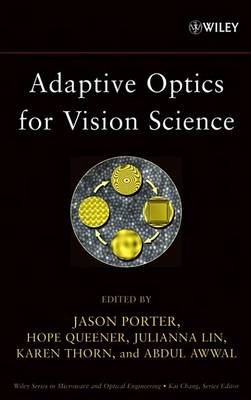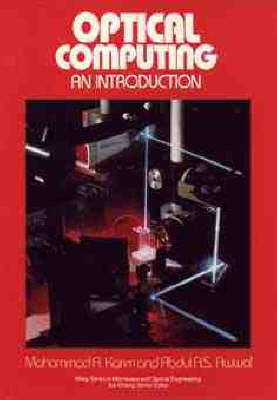Wiley Series in Microwave and Optical Engineering
1 primary work • 2 total works
Book 171
Adaptive Optics for Vision Science
by Jason Porter, Hope Queener, Julianna Lin, Karen Thorn, and Abdul A. S. Awwal
Published 1 January 2006
Leading experts present the latest technology and applications in adaptive optics for vision science
Featuring contributions from the foremost researchers in the field, Adaptive Optics for Vision Science is the first book devoted entirely to providing the fundamentals of adaptive optics along with its practical applications in vision science. The material for this book stems from collaborations fostered by the Center for Adaptive Optics, a consortium of more than thirty universities, government laboratories, and corporations.
Although the book is written primarily for researchers in vision science and ophthalmology, the field of adaptive optics has strong roots in astronomy. Researchers in both fields share this technology and, for this reason, the book includes chapters by both astronomers and vision scientists.
Following the introduction, chapters are divided into the following sections:
* Wavefront Measurement and Correction
* Retinal Imaging Applications
* Vision Correction Applications
* Design Examples
Readers will discover the remarkable proliferation of new applications of wavefront-related technologies developed for the human eye. For example, the book explores how wavefront sensors offer the promise of a new generation of vision correction methods that can deal with higher order aberrations beyond defocus and astigmatism, and how adaptive optics can produce images of the living retina with unprecedented resolution.
An appendix includes the Optical Society of America's Standards for Reporting Optical Aberrations. A glossary of terms and a symbol table are also included.
Adaptive Optics for Vision Science arms engineers, scientists, clinicians, and students with the basic concepts, engineering tools, and techniques needed to master adaptive optics applications in vision science and ophthalmology. Moreover, readers will discover the latest thinking and findings from the leading innovators in the field.
Featuring contributions from the foremost researchers in the field, Adaptive Optics for Vision Science is the first book devoted entirely to providing the fundamentals of adaptive optics along with its practical applications in vision science. The material for this book stems from collaborations fostered by the Center for Adaptive Optics, a consortium of more than thirty universities, government laboratories, and corporations.
Although the book is written primarily for researchers in vision science and ophthalmology, the field of adaptive optics has strong roots in astronomy. Researchers in both fields share this technology and, for this reason, the book includes chapters by both astronomers and vision scientists.
Following the introduction, chapters are divided into the following sections:
* Wavefront Measurement and Correction
* Retinal Imaging Applications
* Vision Correction Applications
* Design Examples
Readers will discover the remarkable proliferation of new applications of wavefront-related technologies developed for the human eye. For example, the book explores how wavefront sensors offer the promise of a new generation of vision correction methods that can deal with higher order aberrations beyond defocus and astigmatism, and how adaptive optics can produce images of the living retina with unprecedented resolution.
An appendix includes the Optical Society of America's Standards for Reporting Optical Aberrations. A glossary of terms and a symbol table are also included.
Adaptive Optics for Vision Science arms engineers, scientists, clinicians, and students with the basic concepts, engineering tools, and techniques needed to master adaptive optics applications in vision science and ophthalmology. Moreover, readers will discover the latest thinking and findings from the leading innovators in the field.
A source on the rapidly changing field of optical computing. Readers are taken through the relevant concepts of classical and Fourier optics, digital logic and digital image processing. In addition to exploration of the basic principles, it applies the characteristics of both all-optical and electro-optic devices/systems to the solution of optical computing. Additional discussions focus on analog optical computing, digital logic and digital optical computing. Exercise problems, up-to-date references and further reading resources complete the book.

